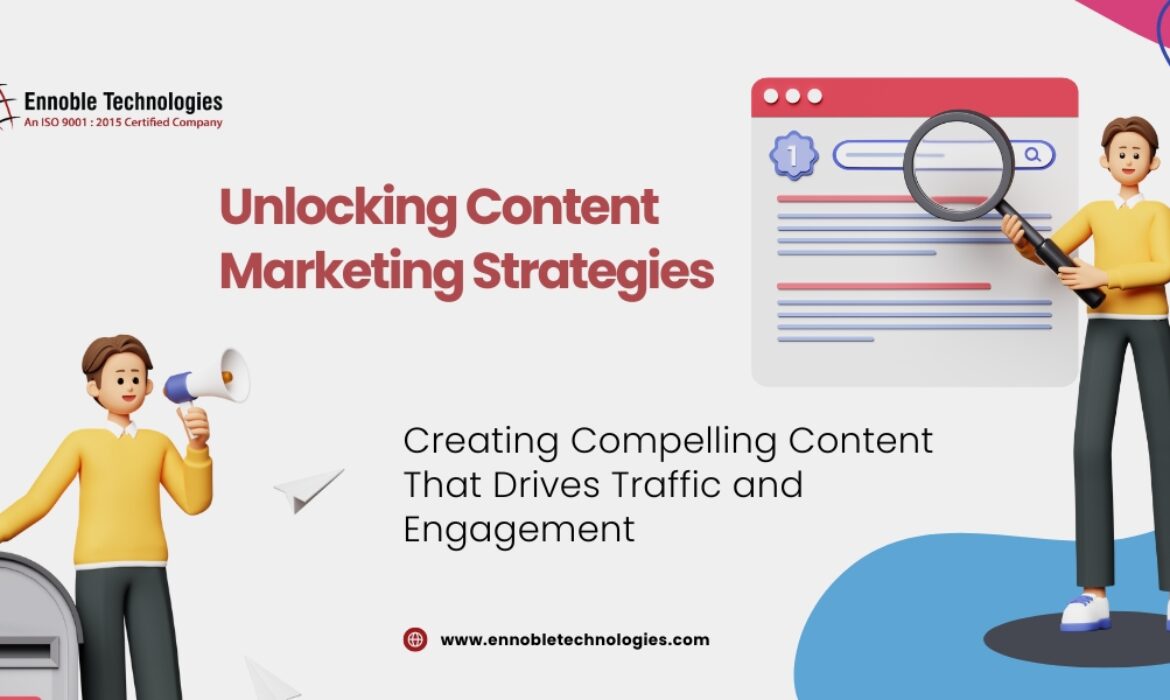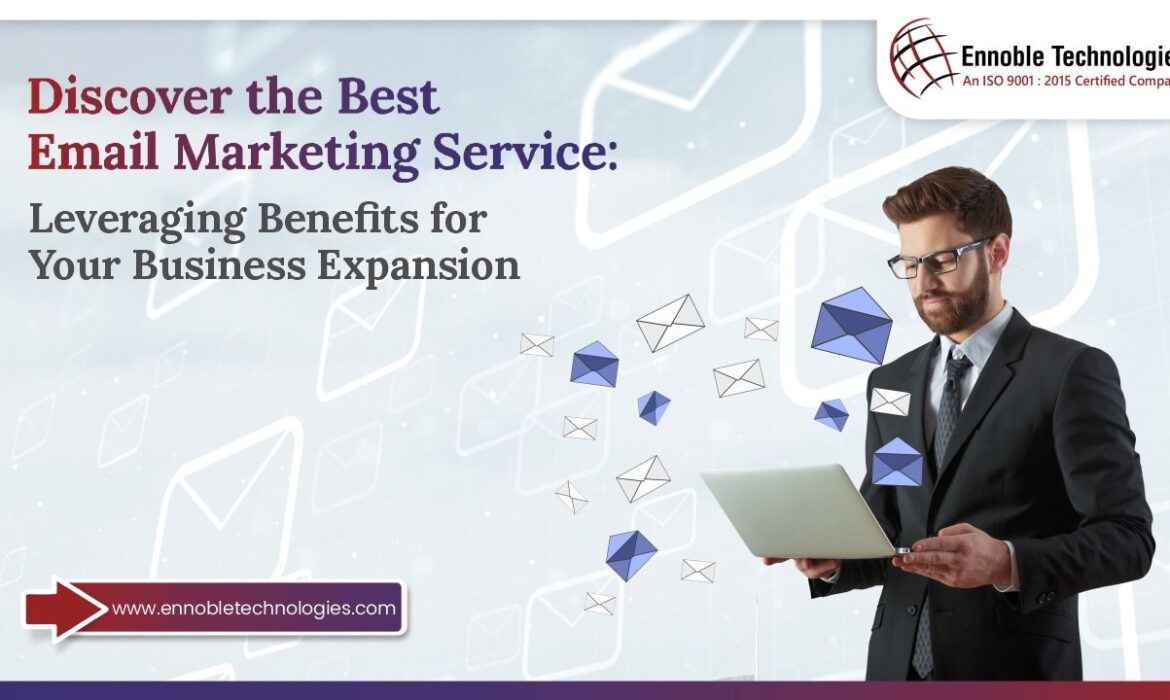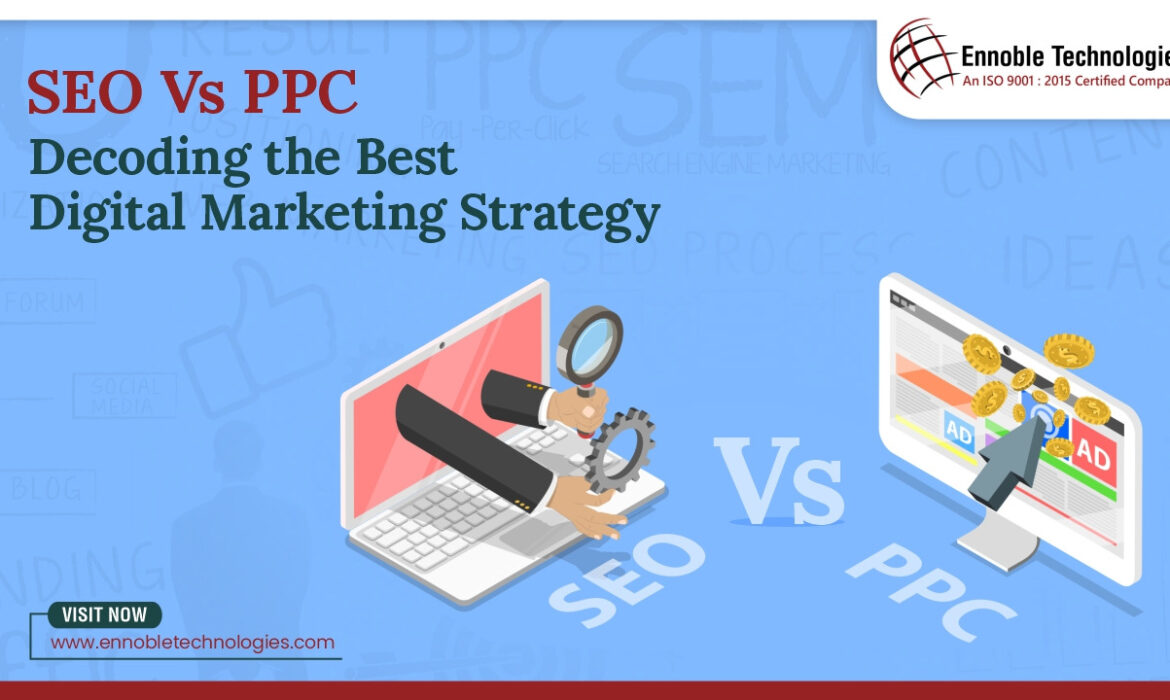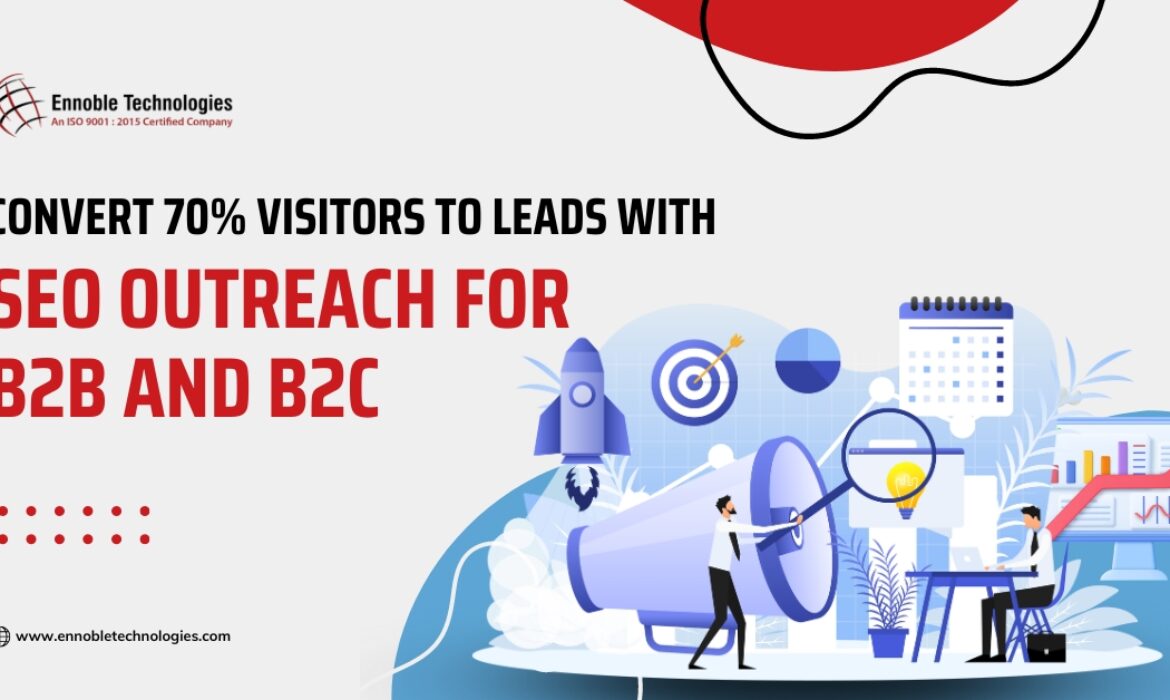Unlocking Content Marketing Strategies: Creating Compelling Content That Drives Traffic and Engagement
In the digital age, businesses are constantly seeking innovative ways to capture their audience’s attention and drive meaningful engagement. One of the most effective methods is through content marketing strategies. This comprehensive guide will delve into the intricacies of creating compelling content that not only drives traffic but also boosts engagement.
Understanding Content Marketing Strategies
At the core of any successful digital marketing campaign lies a robust content marketing strategy. This strategy involves the planning, creation, distribution, and management of content that attracts and retains a clearly defined audience. The ultimate goal is to drive profitable customer action.
Content marketing strategies encompass various elements, including blog posts, social media content, videos, infographics, and more. Each piece of content should be tailored to meet the needs and interests of your target audience, ensuring relevance and value.
Creating Compelling Content

One of the most critical aspects of effective content marketing strategies is the ability to create compelling content. Creating compelling content involves more than just writing well; it requires a deep understanding of your audience’s pain points, preferences, and behaviors.
Ennoble Technologies’ expertise in content marketing strategies is unparalleled. We employ a data-driven approach to identify what resonates with your audience, ensuring that each piece of content is engaging and informative. By leveraging insights from analytics, we craft content that not only captures attention but also encourages interaction and shares.
Driving Traffic and Engagement
The success of any content marketing strategy is measured by its ability to drive traffic and engagement. Driving traffic and engagement involves a combination of SEO techniques, social media promotion, and content distribution.
Ennoble Technologies SEO services play a crucial role in this process. By optimizing content for search engines, they help increase visibility and attract organic traffic. Our expertise in keyword research ensures that your content ranks highly for relevant searches, driving more visitors to your site.
Additionally, Ennoble Technologies excels in social media marketing, helping you leverage various platforms to reach a broader audience. Our strategies include creating shareable content, engaging with followers, and utilizing paid promotions to amplify your reach.
Effective Content Creation
Effective content creation is a blend of art and science. It involves understanding the nuances of storytelling, the principles of design, and the intricacies of SEO.
Ennoble Technologies employs a team of skilled writers, designers, and SEO experts who collaborate to produce high-quality content. Their approach to effective content creation ensures that each piece is not only visually appealing but also optimized for search engines and tailored to your audience’s preferences.
Ennoble Technologies’ Expertise

When it comes to content marketing strategies, Ennoble Technologies expertise is a game-changer. Our holistic approach combines creative storytelling with data-driven insights, ensuring that your content is both engaging and effective.
Our proficiency in content strategy development means that they can help you create a roadmap for your content marketing efforts. This includes identifying key topics, setting content goals, and developing a content calendar. By aligning your content with your business objectives, they ensure that every piece contributes to your overall strategy.
Increasing Audience Engagement
Increasing audience engagement is a key objective of any content marketing strategy. Engaged audiences are more likely to convert into customers, making it essential to create content that resonates with them.
Ennoble Technologies employs various tactics to boost engagement. This includes interactive content such as quizzes and polls, as well as personalized content that speaks directly to the reader’s interests and needs. Our expertise in driving engagement ensures that your audience remains interested and invested in your brand.
Content Strategy Development
A well-defined content strategy development is the backbone of successful content marketing. It involves setting clear objectives, identifying your target audience, and planning your content calendar.
Ennoble Technologies excels in this area, providing comprehensive content strategy development services. We help you define your brand voice, determine the types of content that will resonate with your audience, and establish a content distribution plan. By aligning your content efforts with your overall marketing strategy, they ensure that each piece contributes to your business goals.
Ennoble Technologies SEO Services

SEO is a critical component of any content marketing strategy. Without proper optimization, even the most compelling content can go unnoticed. Ennoble Technologies SEO services ensure that your content is visible to the right audience.
Our SEO experts conduct thorough keyword research to identify terms that your target audience is searching for. By integrating these keywords into your content, we help improve your search engine rankings. Additionally, their on-page and off-page SEO techniques ensure that your content is optimized for maximum visibility.
Boosting Website Traffic
One of the primary goals of content marketing strategies is boosting website traffic. More traffic means more potential customers and increased opportunities for conversions.
Ennoble Technologies employs a multi-faceted approach to drive traffic to your site. This includes optimizing your content for search engines, promoting it on social media, and utilizing paid advertising. Our expertise in boosting website traffic ensures that your content reaches a broad audience, increasing your chances of attracting new customers.
Content Marketing Best Practices
To achieve success with content marketing strategies, it’s essential to follow best practices. These practices ensure that your content is effective, engaging, and aligned with your business goals.
Ennoble Technologies adheres to the highest standards in content marketing. Our team stays up-to-date with the latest industry trends and techniques, ensuring that your content is always fresh and relevant. By following content marketing best practices, they help you create content that drives results.
Ennoble Technologies Driving Engagement
Driving engagement is at the heart of Ennoble Technologies’ approach to content marketing. They understand that engaged audiences are more likely to convert into customers, making it essential to create content that resonates with them.
Our strategies for driving engagement include creating interactive content, personalizing content to speak directly to the reader’s needs, and utilizing social media to foster community and interaction. By focusing on driving engagement, we help you build a loyal audience that is invested in your brand.
Conclusion
In conclusion, content marketing strategies are essential for any business looking to succeed in the digital age. By creating compelling content that drives traffic and engagement, you can attract new customers and build a loyal audience. Ennoble Technologies expertise in this area is unparalleled. Our comprehensive approach to content marketing, which includes effective content creation, SEO services, and content strategy development, ensures that your content is engaging and effective. By leveraging our knowledge and experience, you can unlock the full potential of your content marketing efforts and achieve your business goals.
Whether you’re looking to increase audience engagement, boost website traffic, or simply create more compelling content, Ennoble Technologies has the skills and expertise to help you succeed. With our guidance, you can develop a robust content marketing strategy that drives results and sets you apart from the competition.
Read more: https://ennoblegrp.com/e-commerce/boosting-e-commerce-conversion/
Discover the Best Email Marketing Service: Leveraging Benefits for Your Business Expansion
Introduction
Email marketing remains one of the most effective ways to engage with customers and drive business growth. With the right strategy and tools, businesses can leverage the best email marketing service to expand their reach and enhance their marketing efforts. In this blog, we’ll explore the importance of email marketing, the key features to look for in an email marketing service, and how to choose the best one for your business.
Importance of Email Marketing in Business Growth

Email marketing is crucial for business growth as it allows companies to connect directly with their audience. Whether you’re announcing a new product, sharing a blog post, or offering a special deal, the best email marketing service can help you deliver your message effectively. By maintaining regular contact with your customers, you can increase engagement, build loyalty, and ultimately drive sales.
Overview of Email Marketing Services
Email marketing services provide the tools needed to create, send, and track email campaigns. The best email marketing service will offer a range of features designed to make your campaigns more effective and easier to manage. From customizable templates to detailed analytics, these services can streamline your email marketing efforts and enhance your results.
Key Features to Look for in an Email Marketing Service
When searching for the best email marketing service, there are several key features to consider:
- User-Friendly Interface: A user-friendly interface makes it easier to create and manage email campaigns. The best email marketing service should offer intuitive design tools and straightforward navigation.
- Automation Capabilities: Automation features allow you to set up workflows for tasks like sending welcome emails or follow-ups. The best email marketing service will help you save time and ensure timely communication.
- Personalization and Segmentation: Personalizing your emails can significantly increase engagement. Look for a service that allows you to segment your audience and tailor your messages.
- Analytics and Reporting: Detailed analytics are essential for measuring the success of your campaigns. The best email marketing service will provide insights into open rates, click-through rates, and more.
- Integration with Other Tools: Integrating with other tools, such as CRM systems and social media platforms, can enhance your marketing efforts. The best email marketing service will offer seamless integration options.
Top Email Marketing Services for Business Expansion

To help you find the best email marketing service for your needs, here’s an overview of leading platforms:
- Overview of Leading Platforms: Explore the top email marketing services available today, such as Mailchimp, Constant Contact, and HubSpot.
- Comparative Analysis of Features and Pricing: Compare the features and pricing of these services to determine which offers the best value for your business.
- Customer Reviews and Case Studies: Read customer reviews and case studies to see how other businesses have benefited from using these services.
Leveraging Email Marketing for Business Growth
Using the best email marketing service, you can take several steps to drive business growth:
- Building and Growing Your Email List: Start by building a robust email list. The best email marketing service will provide tools to help you attract and retain subscribers.
- Crafting Effective Email Campaigns: Create compelling email campaigns that resonate with your audience. The best email marketing service will offer templates and design tools to help you craft professional-looking emails.
- Utilizing Automation for Efficiency: Set up automated workflows to handle repetitive tasks. The best email marketing service will make it easy to automate your email marketing efforts.
- Personalization Strategies to Engage Customers: Personalize your emails to make them more relevant to your audience. The best email marketing service will provide tools for segmentation and personalization.
- Analyzing Campaign Performance for Continuous Improvement: Use analytics to measure the success of your campaigns. The best email marketing service will offer detailed reporting to help you refine your strategies.
Benefits of Using a Robust Email Marketing Service
A robust email marketing service offers a myriad of benefits that can transform your marketing efforts and significantly impact your business growth. Firstly, increased customer engagement and retention is a key benefit. Regularly sending out valuable content, updates, and personalized offers keeps your audience engaged and fosters a strong relationship with your brand. Over time, this consistent interaction leads to higher customer retention rates, as your audience becomes more loyal and connected to your brand.
Secondly, robust email marketing services often lead to higher conversion rates. By leveraging advanced segmentation and personalization features, you can tailor your messages to specific audience segments, making them more relevant and compelling. This targeted approach ensures that your emails resonate with your audience, increasing the likelihood of conversions, whether it’s making a purchase, signing up for a webinar, or downloading a resource.
Moreover, email marketing is known for being a cost-effective marketing solution. Compared to traditional marketing channels, email marketing offers a higher return on investment (ROI). The costs associated with email marketing services are generally lower, and the ability to reach a large audience with minimal expense makes it an attractive option for businesses of all sizes.
Lastly, a robust email marketing service enhances brand awareness and loyalty. Consistently appearing in your audience’s inbox keeps your brand top-of-mind. Through regular communication, you can reinforce your brand message, share your values, and showcase your products or services. This continuous exposure helps build brand recognition and loyalty, as customers come to trust and rely on your brand for valuable information and offers.
Tips for Choosing the Right Email Marketing Service for Your Business

Selecting the best email marketing service for your business involves careful consideration of several factors. Start by assessing your business needs. Identify the features and functionalities that are most important for your email marketing strategy. Do you need advanced automation? Are detailed analytics crucial for your decision-making? Understanding your specific requirements will help you narrow down your options.
Next, consider your budget. Email marketing services come with varying pricing plans, and it’s essential to find one that fits within your financial constraints. While some services offer comprehensive features at a higher cost, others provide basic functionalities at a more affordable rate. Compare the pricing plans and evaluate what each service offers to ensure you get the best value for your investment.
Evaluating customer support and resources is another critical step. A good email marketing service should offer reliable customer support to help you navigate any issues or questions that arise. Look for services that provide various support channels, such as live chat, phone support, and email assistance. Additionally, check if the service offers educational resources, such as tutorials, webinars, and a knowledge base, to help you maximize the platform’s potential.
Finally, take advantage of trial and testing options. Many email marketing services offer free trials or demo versions, allowing you to test their features and interface before committing. Use this opportunity to explore the service, create test campaigns, and evaluate how well it meets your needs. This hands-on experience will give you a clearer idea of which service is the best fit for your business.
Next Steps for Implementing an Email Marketing Strategy
Once you’ve chosen the best email marketing service for your business, it’s time to implement your strategy. Start by setting clear objectives for your email marketing campaigns. Determine what you want to achieve, whether it’s increasing sales, driving website traffic, or boosting engagement.
Begin building your email list by utilizing various lead generation tactics. Create sign-up forms on your website, offer incentives for subscribing, and leverage social media to attract new subscribers. Ensure that your list is segmented based on factors such as demographics, behavior, and preferences, allowing you to send targeted and personalized emails.
Craft compelling email content that resonates with your audience. Focus on delivering value through informative articles, exclusive offers, and engaging visuals. Use the personalization and segmentation features of your email marketing service to tailor your messages to different audience segments.
Utilize automation to streamline your campaigns. Set up automated workflows for welcome emails, follow-ups, and re-engagement campaigns. Automation ensures timely and relevant communication, saving you time and effort.
Regularly analyze your campaign performance using the analytics and reporting tools provided by your email marketing service. Track metrics such as open rates, click-through rates, and conversions to gauge the effectiveness of your campaigns. Use these insights to refine your strategy and continuously improve your results.
By following these steps and leveraging the best email marketing service, you can create a powerful email marketing strategy that drives business growth and expands your reach. Ennoble Technologies provides the best email marketing services, ensuring you achieve optimal results with expert guidance and innovative solutions.
Read more: ChatGPT vs Gemini AI – Ennoble Technologies
PPC and SEO: Decoding the Best Digital Marketing Strategy
Introduction to PPC and SEO
PPC and SEO are two fundamental digital marketing strategies. PPC involves paying for ads to appear at the top of search engine results or on social media platforms, providing immediate visibility and targeted traffic. In contrast, SEO focuses on optimizing a website to rank higher in organic search results through high-quality content, technical improvements, and backlinks, ensuring sustainable and long-term traffic growth. Together, PPC and SEO complement each other by offering both instant results and a lasting online presence, making them essential for a comprehensive digital marketing approach.
What is PPC (Pay-Per-Click)?

PPC, or Pay-Per-Click, is a digital advertising model where advertisers pay a fee each time their ad is clicked. Essentially, it’s a way to buy visits to your site, driving targeted traffic quickly and efficiently.
How It Works:
- Advertising Platforms: The most popular PPC platforms are Google Ads, Bing Ads, Facebook Ads, and LinkedIn Ads. Each platform has its own unique set of features, audience targeting options, and ad formats.
- Keyword Bidding: Advertisers bid on specific keywords related to their products or services. When users search for these keywords, the ads may appear on the search engine results pages (SERPs) or within the chosen platform.
- Ad Placement: Depending on the platform, ads can appear in various formats and locations. For example, Google Ads can display text ads above organic search results, while Facebook Ads might show image or video ads within a user’s feed.
- Cost Structure: PPC operates on a bidding system where the cost per click (CPC) can vary greatly depending on keyword competitiveness, industry, and ad quality. Advertisers can set daily or monthly budgets to control their spending.
- Ad Types: There are several types of PPC ads, including search ads (text-based), display ads (banner images), shopping ads (product listings), and video ads. Each type serves different purposes and can be tailored to specific marketing goals.
PPC is particularly effective for businesses looking to achieve quick results and drive immediate traffic to their websites. It’s an excellent strategy for promotions, product launches, and gaining visibility in competitive markets.
What is SEO (Search Engine Optimization)?

SEO, or Search Engine Optimization, is the practice of enhancing your website to improve its visibility in organic search engine results. Unlike PPC, SEO focuses on earning traffic rather than paying for it, making it a cost-effective strategy in the long run.
How It Works:
- Keyword Research: The foundation of SEO is understanding what terms and phrases your potential customers use to find products or services similar to yours. Tools like Google Keyword Planner, SEMrush, and Ahrefs can help identify valuable keywords.
- On-Page SEO: This involves optimizing individual pages on your website. Key elements include integrating target keywords into your content, crafting compelling meta descriptions, using header tags (H1, H2, etc.), and ensuring images have descriptive alt text.
- Technical SEO: Ensuring your website is technically sound is crucial for SEO success. This includes optimizing site speed, ensuring mobile-friendliness, creating a clean URL structure, and submitting sitemaps for proper indexing by search engines.
- Content Creation: High-quality, relevant content is king in the world of SEO. Regularly publishing informative and engaging blog posts, articles, and other content types can attract and retain visitors, while also signaling to search engines that your site is active and valuable.
- Link Building: Acquiring backlinks from reputable websites helps to build your site’s authority. Techniques include guest blogging, creating shareable infographics, and developing relationships with industry influencers.
- User Experience (UX): SEO isn’t just about search engines; it’s also about providing a great experience for your users. A well-designed, easy-to-navigate site can reduce bounce rates and increase the time visitors spend on your site, both of which are positive signals to search engines.
SEO is a long-term strategy that requires patience and continuous effort. However, the payoff can be substantial, with a steady stream of free, organic traffic to your site and a stronger online presence.
Summary and Transition to Comparison
Now that we’ve detailed the fundamentals of both PPC and SEO, let’s transition into comparing these two powerful digital marketing strategies. Each has its own strengths and is suited to different goals and situations. Whether you’re looking for quick, measurable results or aiming to build a robust, long-term presence, understanding the nuances of PPC and SEO will help you make informed decisions for your marketing efforts.
Shall we dive into a detailed comparison of their benefits, drawbacks, and best-use scenarios?
Detailed Comparison of PPC and SEO

Now that we have a thorough understanding of what PPC (Pay-Per-Click) and SEO (Search Engine Optimization) entail, let’s dive into a detailed comparison to help you determine which strategy might be best for your needs.
Speed of Results
PPC: Immediate Impact
- PPC campaigns can be set up quickly, and ads can start driving traffic almost immediately after launch.
- Ideal for businesses needing rapid results, such as during a product launch or a time-sensitive promotion.
SEO: Long-Term Growth
- SEO takes time to show results, often several months of consistent effort.
- Suitable for businesses aiming for sustained, long-term growth and building a robust online presence.
Cost Considerations
PPC: Controlled but Ongoing Costs
- PPC requires an ongoing investment. You pay each time someone clicks on your ad, with costs varying based on keyword competitiveness and bid amounts.
- Allows precise budget control, but costs can add up, especially in competitive industries.
SEO: Upfront Effort, Lower Long-Term Costs
- SEO involves significant upfront effort in optimizing the site and creating content. However, once your site starts ranking well, the traffic is essentially free.
- Long-term investment with potentially high ROI, but requires patience and continuous optimization.
Traffic Sustainability
PPC: Temporary Boost
- PPC provides a temporary boost in traffic. Once you stop paying for ads, the traffic stops.
- Best for short-term campaigns or when immediate visibility is crucial.
SEO: Sustainable and Evergreen
- SEO efforts lead to sustainable traffic growth. High-ranking content can continue to attract visitors for months or even years without additional costs.
- Great for building long-term authority and consistent traffic flow.
Trust and Credibility
PPC: Perceived as Ads
- PPC ads are often clearly marked as advertisements, which some users may distrust or ignore.
- Effective for visibility but may not always build long-term trust.
SEO: Earned Credibility
- SEO results are seen as more credible and trustworthy by users since they are earned through relevance and quality.
- Enhances your brand’s authority and trustworthiness over time.
Targeting and Customization
PPC: Precise Targeting
- PPC allows detailed targeting options, including demographics, geographic locations, time of day, and even user behaviors.
- Perfect for highly targeted campaigns aiming to reach specific audiences.
SEO: Broad Targeting
- SEO targets users based on search intent and relevant content. It’s less precise than PPC but can attract a wider audience looking for information.
- Effective for capturing broad interest and various stages of the buyer’s journey.
Measurement and Analytics
PPC: Detailed Metrics
- PPC provides extensive analytics, including click-through rates (CTR), conversion rates, cost per click (CPC), and return on ad spend (ROAS).
- Facilitates precise measurement and adjustment of campaigns for optimal performance.
SEO: Complex Metrics
- SEO analytics include organic traffic, keyword rankings, bounce rates, and time on site. Tools like Google Analytics and Search Console provide insights.
- Measuring SEO performance is more complex and involves tracking multiple metrics over time.
Adaptability and Flexibility
PPC: Quick Adjustments
- PPC campaigns can be quickly adjusted in response to performance data or market changes.
- Highly flexible, allowing for rapid testing of different ads and strategies.
SEO: Slow Adaptation
- SEO changes, such as updating content or building new links, take time to reflect in search rankings.
- Requires a more strategic and patient approach to adapt to changes in search algorithms and user behavior.
Use Case Scenarios
When to Use PPC:
- Launching a new product or service and needing immediate visibility.
- Running time-sensitive promotions or sales.
- Targeting specific demographics with precise ads.
- Testing market response quickly.
When to Use SEO:
- Building a long-term, sustainable online presence.
- Enhancing brand credibility and authority.
- Targeting a broad audience at various stages of the buying cycle.
- Investing in a cost-effective strategy with high ROI over time.
PPC (Pay-Per-Click)
Advantages:
Immediate Results: PPC can generate traffic as soon as your ads go live.
Targeted Advertising: You can target specific demographics, locations, and even times of the day.
Control Over Budget: You can set a specific budget and only pay when someone clicks on your ad.
Measurable Results: PPC platforms provide detailed analytics on ad performance.
Brand Visibility: PPC ads appear at the top of search results, enhancing brand visibility.
Disadvantages:
Cost: Can be expensive, especially for competitive keywords.
Temporary: Traffic stops when you stop paying for ads.
Ad Blindness: Some users ignore ads, focusing instead on organic search results.
Continuous Management: Requires ongoing management and optimization to remain effective.
SEO (Search Engine Optimization)
Advantages:
Cost-Effective: Organic traffic is free once your site ranks well.
Sustainable Results: SEO efforts can lead to long-term traffic growth.
Credibility and Trust: Organic search results are often perceived as more trustworthy.
Increased Click-Through Rates (CTR): Higher CTR compared to PPC ads.
Improves User Experience: SEO focuses on creating high-quality content and a better user experience.
Disadvantages:
Time-Consuming: Takes time to see results, often several months.
Algorithm Changes: Search engines frequently update their algorithms, which can affect rankings.
Complexity: SEO requires a deep understanding of search engine algorithms and ranking factors.
Ongoing Effort: Continuous effort and updates are needed to maintain and improve rankings.
Key Differences
- Speed: PPC provides immediate results, while SEO is a long-term strategy.
- Cost: PPC requires ongoing investment, while SEO involves upfront effort but can yield long-term free traffic.
- Sustainability: SEO provides sustainable traffic, while PPC requires constant spending.
- Trust and Credibility: SEO tends to build more trust with users compared to PPC.
- Targeting: PPC allows precise targeting options, whereas SEO targets are based on keyword optimization and content relevance.
Let’s delve deeper into how to integrate PPC and SEO effectively to maximize your digital marketing efforts.
Integrating PPC and SEO
Combining PPC and SEO strategies can create a powerful synergy, enhancing your overall online presence and driving more significant results. Here’s how you can effectively integrate both approaches:

1. Keyword Strategy
Unified Keyword Research:
- Conduct comprehensive keyword research to identify high-performing keywords for both PPC and SEO.
- Use tools like Google Keyword Planner, Ahrefs, and SEMrush to find keywords that have high search volumes and relevance to your business.
- Identify overlapping keywords that can be targeted in both PPC campaigns and SEO content.
Complementary Keywords:
- Use PPC data to discover high-converting keywords that might not yet rank well organically.
- Optimize your SEO content for these high-performing PPC keywords to gradually improve organic rankings.
- Utilize long-tail keywords in SEO that may be too expensive to target with PPC.
2. Content Marketing
Content Creation:
- Develop high-quality, engaging content based on your keyword research. This content can serve both SEO and PPC purposes.
- Create blog posts, articles, videos, and infographics that address the needs and interests of your target audience.
- Use PPC to promote your content and drive immediate traffic, while simultaneously working on organic rankings.
Landing Pages:
- Design landing pages optimized for both PPC conversions and SEO. Ensure they are relevant to the ad copy and keywords used in your PPC campaigns.
- A/B test different landing pages to determine which performs best in terms of conversions and user engagement.
- Optimize these pages for SEO by incorporating target keywords, meta descriptions, and quality content.
3. Data Sharing and Insights
Performance Analytics:
- Share data between your PPC and SEO teams to gain comprehensive insights into which strategies are working best.
- Use PPC data to identify which keywords and ad copies generate the most conversions, then apply these insights to your SEO strategy.
- Analyze SEO performance to understand which keywords and content pieces drive the most organic traffic, and consider incorporating these into your PPC campaigns.
Conversion Tracking:
- Implement conversion tracking for both PPC and SEO efforts to measure the effectiveness of each strategy.
- Use tools like Google Analytics, Google Ads, and other marketing platforms to track user behavior, conversions, and ROI.
- Compare conversion data to understand the customer journey and how PPC and SEO contribute to different stages of the funnel.
4. Brand Visibility and Credibility
Enhanced Brand Presence:
- Use PPC to gain immediate visibility at the top of search engine results while your SEO efforts build up.
- Having both paid ads and organic listings appear on the same SERP can increase brand credibility and capture more real estate.
- This dual presence can improve click-through rates (CTR) and provide a more robust online presence.
Reinforcing Messaging:
- Ensure your PPC ads and SEO content deliver consistent messaging and branding.
- Use similar headlines, value propositions, and calls-to-action (CTAs) across both channels to reinforce your brand message.
- This consistency helps build trust and recognition among your audience.
5. Local Search Optimization
Local SEO and PPC:
- For businesses targeting local customers, integrate local SEO practices with PPC campaigns.
- Optimize your Google My Business listing and use local keywords in your SEO content.
- Run location-based PPC ads to attract local traffic and increase visibility in your target areas.
Practical Steps to Integrate PPC and SEO
- Regular Meetings and Collaboration:
- Schedule regular meetings between your PPC and SEO teams to discuss strategies, share insights, and align goals.
- Foster a collaborative environment where both teams work together to enhance overall performance.
- Unified Reporting:
- Create unified reports that include metrics from both PPC and SEO campaigns. This helps in understanding the bigger picture and making informed decisions.
- Use these reports to identify opportunities for improvement and areas where integration can be enhanced.
- Consistent Optimization:
- Continuously optimize both PPC and SEO efforts based on performance data. Adjust bids, ad copies, and keywords for PPC, and update content, meta tags, and technical aspects for SEO.
- Stay updated with algorithm changes and industry trends to keep both strategies effective and relevant.
On a final note:
By integrating PPC and SEO, you can leverage the strengths of both strategies to achieve comprehensive digital marketing success. This approach not only maximizes your reach and visibility but also ensures that you capture and convert traffic at every stage of the customer journey. Regular collaboration, data sharing, and consistent optimization are key to creating a harmonious and effective marketing strategy.
Read more : https://ennoblegrp.com/social-media/power-of-youtube-marketing/
Convert 70% visitors to leads with SEO Outreach for B2B and B2C
Introduction:
Imagine turning 70% of website visitors into engaged leads, simply by implementing the right SEO outreach strategies. Sounds impossible? It’s not – and we’ll show you how in this blog. In the dynamic realm of digital marketing, search engine optimization (SEO) outreach plays a pivotal role in both Business-to-Business (B2B) and Business-to-Consumer (B2C) sectors. This comprehensive guide explores the distinctive roles and significance of SEO outreach in driving visibility, credibility, and engagement for businesses targeting diverse audiences and markets.
—————————————————————————————————————————————————————–
What is B2B SEO?
B2B SEO involves optimizing your website and online presence to attract qualified business leads through organic search, leveraging targeted content and strategic outreach to cater to longer sales cycles and complex decision-making processes.
—————————————————————————————————————————————————————–
SEO Outreach in B2B Digital Marketing
In the competitive landscape of B2B digital marketing, SEO outreach stands out as a critical component for driving organic visibility, establishing authority, and generating high-quality leads. By implementing targeted outreach b2b strategies, building meaningful relationships, and continuously optimizing their approach, B2B marketers can unlock new opportunities for growth, differentiation, and success in their respective industries.
B2B Blogger Outreach Strategies: Building Authority and Relationships
Beyond standard Search engine optimization tactics, B2B outreach thrives on building genuine connections with bloggers and industry influencers. Here are key strategies to leverage:
1. Guest Blogging:
- Target relevant publications: Identify industry blogs, thought leader platforms, and online communities frequented by your target audience.
- Pitch valuable content: Offer unique insights, data-driven reports, or industry analyses relevant to their readers.
- Personalize your outreach: Don’t use generic templates. Research the editor’s interests and tailor your pitch to their specific audience.
- Build relationships: Don’t just see it as a one-time opportunity. Interact with their content, offer additional insights, and build long-term connections.
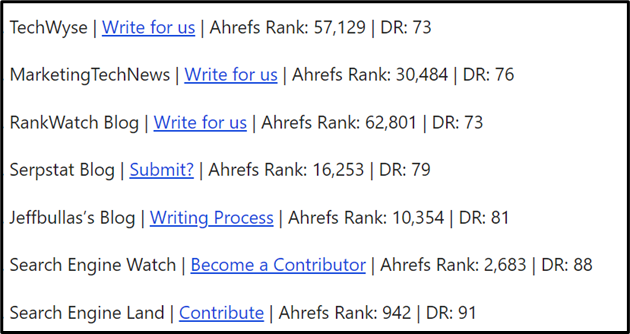
2. Influencer Marketing:
- Identify key influencers: Partner with industry experts, thought leaders, or niche bloggers who resonate with your target audience.
- Collaborate on valuable content: Co-create white papers, webinars, or podcasts addressing industry challenges and showcasing your expertise.
- Leverage their reach: Utilize their established audience to amplify your message and build brand awareness.
- Nurture authentic partnerships: Treat them as valued partners, not just marketing tools. Offer mutual benefits and respect their influence.
3. Create Shareable Content:
- Industry insights with a twist: Go beyond dry reports. Infographics, data visualizations, or interactive tools make complex information engaging.
- Problem-solving content: Address common pain points your target audience faces and offer practical solutions through blog posts, case studies, or guides.
- Leverage social media: Optimize content for different platforms and encourage sharing with relevant hashtags and calls to action.
- Run targeted contests: Partner with relevant bloggers to incentivize content creation and social sharing around your brand or industry topic.
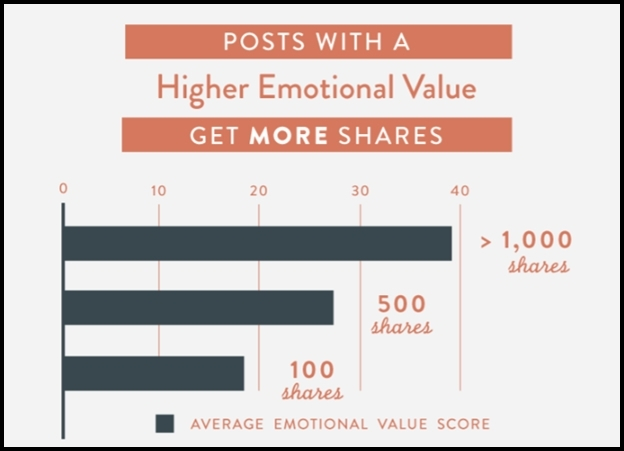
Source: buffer.com
—————————————————————————————————————————————————————–
How to Craft an SEO outreach strategy for B2B success:
Build relationships, leverage data, and create targeted content that resonates with decision-makers.
—————————————————————————————————————————————————————–
SEO Outreach in B2C Digital Marketing
Conversely, in the B2C realm, Search engine optimization outreach serves as a catalyst for engaging with individual consumers, driving brand awareness, and facilitating seamless interactions across diverse consumer segments. Key considerations and B2C SEO strategies for effective search engine optimization outreach in B2C digital marketing include Consumer-Centric Keyword Optimization, User-Centric Content Creation, E-commerce and Local Search engine optimization, Social Media Integration and Influencer Collaboration.

B2C Blogger Outreach Strategies: Engaging Communities and Sparking Conversation
B2C outreach thrives on emotional connection and captivating content. Here are key strategies to spark engagement and build brand love:
1. Interactive Experiences:
- Run contests and giveaways: Partner with relevant bloggers to host product giveaways, photo contests, or user-generated content challenges. This incentivizes interaction and brand awareness.
- Livestream events: Partner with micro-influencers for Q&A sessions, product demonstrations, or behind-the-scenes glimpses. Build a sense of community and excitement.
- Interactive quizzes and polls: Engage audiences with fun quizzes about your products or industry trends. Offer personalized discounts or recommendations based on results.

2. User-Generated Content (UGC):
- Encourage user-generated content: Partner with micro-influencers to create authentic product reviews, tutorials, or lifestyle content featuring your brand.
- Host hashtag campaigns: Encourage user-generated content with branded hashtags and incentives. Showcase the best submissions on your website and social media.
- Run UGC contests: Encourage photo or video submissions showcasing their experience with your brand. Reward creativity and offer exciting prizes.
3. Leverage Social Media Communities:
- Join relevant communities: Engage in discussions, answer questions, and offer valuable insights within relevant online communities and forums. Build trust and brand recognition.
- Partner with community leaders: Collaborate with community moderators or influential members to host AMAs, product demos, or exclusive events. Reach a targeted audience within a trusted space.
- Run community-specific promotions: Offer exclusive discounts or contests targeted towards specific online communities to incentivize engagement and brand loyalty.
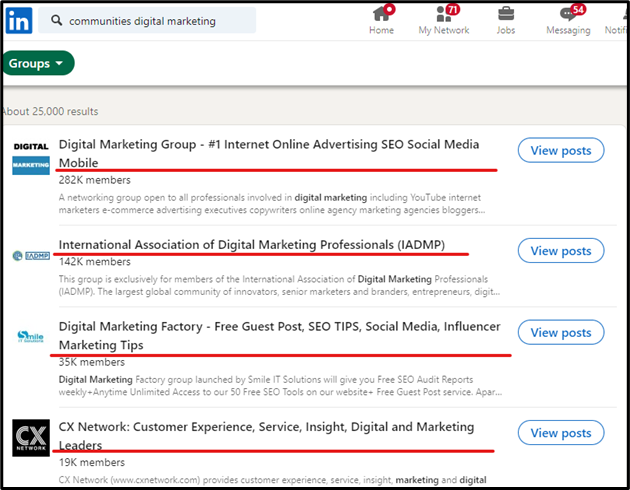
—————————————————————————————————————————————————————–
What is B2C SEO?
B2C SEO optimizes your online presence to attract individual consumers through search engines. Think engaging content, strategic keywords, and mobile-friendliness – all crafted to drive website visits and convert them into customers.
—————————————————————————————————————————————————————–
Common Principles and Best Practices
While the nuances of SEO outreach in B2B and B2C digital marketing are distinct, several common principles and best practices underpin the effectiveness of SEO outreach in both domains, including Content Quality and Relevance, User Experience and Mobile Optimization, Performance Monitoring and Data-Driven Optimization, Adaptation to Search Engine Algorithms and Trends.
Mastering the Double Play: B2B vs. B2C SEO Outreach in 2024
While both aim to build authority and attract leads, B2B and B2C SEO outreach strategies differ due to their unique target audiences and buying journeys. Here’s a quick breakdown:
| Feature | B2B | B2C |
| Target Audience | Decision-makers, businesses | Individual consumers |
| Sales Cycle | Longer, more complex | Shorter, impulse-driven |
| Focus | Building relationships, industry expertise | Brand awareness, emotional connection |
| Platforms | Industry publications, professional networks | Social media, influencer marketing |
| Content | White papers, case studies | Engaging visuals, interactive formats |
| Metrics | Domain authority, backlinks | Brand mentions, social engagement |
Current Trends in SEO Outreach:
Navigating the Ever-Evolving Landscape of SEO Outreach: Expert Insights from 10 Years in the Trenches
Gone are the days of generic, spray-and-pray outreach emails. Today’s SEO landscape demands a sophisticated, data-driven, and personalized approach that builds genuine relationships and resonates with your target audience. Here’s what I’ve learned in my 10-year journey, exploring the key trends shaping the future of SEO outreach:
1. Personalization is King (and Queen):
Forget mass blasting – it’s time to craft messages tailored to individual influencers and their audiences. Consider:
- Researching: Dive deep into their content, interests, and values to find common ground.
- Segmenting: Group influencers by niche, demographics, and engagement levels for targeted pitches.
- Hyper-personalizing: Use dynamic variables to address them by name and reference specific content they’ve created.
The ROI: A study by Yesware found that personalized emails have a 14% higher open rate and a 6% higher reply rate than generic ones.
Real-world example: Buzzsumo, a content marketing platform, saw a 300% increase in outreach success by personalizing pitches with relevant data about influencers’ past shares.
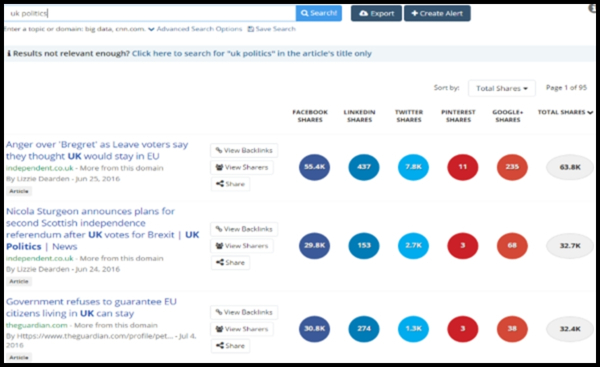
2. Data Drives Decisions:
Don’t gamble on gut feeling, leverage data to identify high-potential targets and track campaign performance. Tools like:
- Buzzsumo: Analyze trending topics and identify relevant influencers.
- Ahrefs: Track competitor backlinks and discover potential outreach partners.
- Google Analytics: Measure traffic sources and identify influencers driving valuable visits.
The stat: Marketing Charts reports that 87% of marketers leverage data analytics to identify marketing opportunities.
Real-world example: SEMrush, a SEO software company, used data to identify relevant podcasts, secured guest appearances, and saw a 40% increase in organic traffic.
3. New Platforms Emerge:
Expand your reach beyond traditional blogs and websites. Consider:
- Podcasts: Guest appearances on relevant podcasts can tap into engaged audiences and build brand authority.
- Social media communities: Engaging with niche groups on platforms like Reddit and Discord fosters meaningful connections and brand advocacy.
- Live video platforms: Platforms like Twitch and YouTube Live offer interactive opportunities to connect with audiences in real-time.
The potential: Social media influencer marketing is expected to reach a $16.4 billion industry by 2025.
Real-world example: Dollar Shave Club partnered with micro-influencers on Instagram, reaching a targeted audience and achieving a 25% increase in sales.
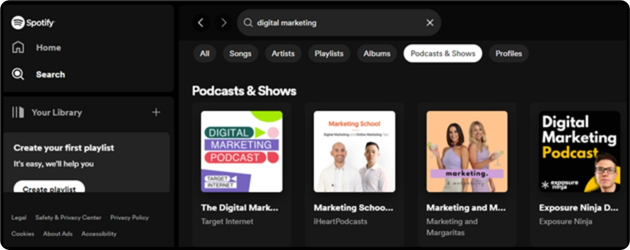
4. Micro-Influencers Make a Mark:
Forget celebrity endorsements, micro-influencers (10k-50k followers) offer higher engagement rates and authentic reach. They:
- Possess specific expertise and resonate with niche audiences.
- Foster trust and connection, making their recommendations more impactful.
- Offer better value for your outreach budget compared to big-name influencers.
The stat: Influencer marketing platform AspireIQ found that micro-influencers generate 6 times more engagement per follower than mega-influencers.
Real-world example: Eos Lip Balm partnered with micro-influencers in the beauty niche, resulting in a 400% increase in website traffic and a 20% rise in sales.
5. Voice Search Optimization:
With voice assistants like Siri and Alexa becoming increasingly popular, optimizing your outreach Search engine optimization strategy for voice search is crucial. Consider:
- Long-tail keywords: Focus on natural language phrases people use in voice searches.
- Structured data: Implement schema markup to improve voice search rankings.
- Content clarity: Create concise and informative content that answers specific questions.
The fact: Gartner predicts that 30% of all web searches will be conducted without a screen by 2020.
Real-world example: The Home Depot optimized its website for voice search, resulting in a 20% increase in voice-driven mobile conversions.
6. Content & Outreach Hand-in-Hand:
Your outreach efforts thrive when backed by high-quality content that resonates with your target audience. Integrate:
- Blog posts: Offer valuable insights and data relevant to influencers’ and their audiences’ interests.
- Infographics and visual content: Grab attention and simplify complex information for better engagement.
- Interactive tools and quizzes: Create experiences that encourage participation and generate data for future outreach.
The synergy: A study by Content Marketing Institute revealed that companies with blogs generate 55% more leads than those without.
Real-world example: Buffer, a social media management platform, created engaging infographics and secured backlinks from high-authority websites
—————————————————————————————————————————————————————–
Ennoble excelling at SEO Outreach for clients!
With 7+ years of digital marketing mastery, Ennoble Technologies crafts powerful B2B SEO strategies & B2C SEO outreach campaigns. Our team, led by a 10+year SEO veteran, delivers results that fuel your growth. Uncover the latest trends and proven SEO strategies to engage your audience and dominate the online space. Partner with Ennoble and turn website visitors into loyal customers today!
—————————————————————————————————————————————————————–
B2B Outreach: Mastering the Complex Game – Leveraging 10 Years of Expertise
B2B outreach is a different beast compared to its B2C counterpart. Longer sales cycles, complex decision-making processes, and the need for trust-building require a strategic and nuanced approach. Here, I’ll draw on my 10 years of experience to equip you with powerful B2B outreach best practices:
Understanding the Key Differences:
- Decision-Making: B2B purchases involve multiple stakeholders with diverse needs and concerns. Understand your target company’s buying journey and identify key decision-makers.
- Relationships Matter: Building genuine connections with individuals, not just titles, is crucial. Focus on providing value, not just pitching your product.
- Content is King: Offer insightful content like white papers, case studies, and industry reports that address specific pain points and showcase your expertise.
Actionable Tips for Success:
1. Research is King:
- Target the right companies: Use tools like ZoomInfo or LeadGenius to identify ideal prospects aligned with your solution.
- Know your decision-makers: Research their backgrounds, interests, and challenges to personalize your outreach.
- Understand their industry: Stay updated on industry trends and challenges to position your message for relevance.
2. Personalization is Key:
- Craft email introductions by name: Avoid generic templates and mention something specific about their work or interests.
- Offer tailored solutions: Highlight how your product/service addresses their unique needs and challenges.
- Go beyond email: Consider personalized LinkedIn messages, thought leadership pieces, or even handwritten notes for high-value targets.
3. Leverage Industry Events and Networks:
- Participate in relevant conferences and trade shows: Network with potential partners and decision-makers.
- Join industry associations and online communities: Build relationships and establish your expertise through thought leadership.
- Speak at industry events: Showcase your knowledge and gain credibility within the target audience.
4. Cultivate Relationships with Media and Influencers:
- Identify journalists and publications covering your industry: Build relationships by offering valuable insights and data.
- Contribute guest articles or industry reports: Gain exposure and establish your brand as a thought leader.
- Partner with relevant influencers: Leverage their reach and credibility to connect with key decision-makers.
5. Data & Analytics: Your Guiding Light:
- Track key metrics: Monitor open rates, click-through rates, and website traffic generated from your outreach efforts.
- Identify what’s working and what’s not: A/B test different subject lines, messaging strategies, and content formats.
- Refine your approach: Use data to continuously improve your outreach campaigns and maximize ROI.
Real-World Success Stories:
Case Study: A B2B SaaS company identified key decision-makers at target companies through LinkedIn research. By sending personalized emails with relevant case studies, they secured a 30% meeting acceptance rate.
Industry Example: A marketing agency built relationships with industry journalists by offering unique data and insights. They secured several media placements that generated qualified leads.
Remember, B2B outreach is a marathon, not a sprint. By implementing these best practices and leveraging my 10 years of experience, you can build genuine relationships, create value, and ultimately turn leads into loyal customers for your B2B business.
Cracking the B2C Code: Engaging Outreach B2C Strategies for Today’s Consumers
B2C outreach is a vibrant dance compared to its B2B counterpart. Shorter sales cycles, emotional triggers, and the need to grab attention demand a dynamic and engaging approach.
Leveraging my 10 years of experience, let’s delve into powerful B2C outreach best practices:
Understanding the Key Differences:
- Emotional Connection: Tap into emotions like excitement, joy, or fear to trigger impulsive desires and encourage action.
- Faster Conversions: B2C purchases often happen quickly, so ensure your outreach is clear, concise, and easily leads to conversion.
- Content is King, But Engagement is Queen: Go beyond informative content; create interactive experiences, user-generated content, and shareable moments.
Actionable Tips for Captivating Your Audience:
1. Master the Social Media Game:
- Engage with your audience: Respond to comments, participate in conversations, and run polls to foster a sense of community.
- Leverage influencer marketing: Partner with relevant micro-influencers who resonate with your target audience for authentic reach.
- Run contests and giveaways: Generate excitement and incentivize user interaction with appealing prizes.
2. Create Content that Sizzles:
- Focus on visuals: Utilize captivating images, videos, and infographics that grab attention and tell a story.
- Go interactive: Implement quizzes, polls, and augmented reality experiences to boost engagement.
- Optimize for mobile: Ensure your content displays flawlessly and is easily consumable on smartphones and tablets.
3. Personalization Matters, Even in the Crowd:
- Segment your audience: Create targeted campaigns based on demographics, interests, and past behavior.
- Use dynamic personalization tools: Address individuals by name and tailor messaging based on their preferences.
- Offer exclusive deals and promotions: Reward loyal customers and incentivize repeat purchases.
4. Data & Analytics: Your Performance Compass:
- Track key metrics: Monitor engagement rates, click-through rates, and conversion rates across different platforms and campaigns.
- Run A/B tests: Experiment with different headlines, images, and calls to action to see what resonates best.
- Refine your approach: Use data to continuously improve your outreach efforts and maximize ROI.
Real-World Success Stories:
Case Study: A clothing brand partnered with micro-influencers in the fashion niche. User-generated content featuring the brand led to a 20% increase in website traffic and a 15% rise in sales.
Industry Example: A food delivery app ran a social media campaign with a personalized quiz to recommend dishes. This interactive experience boosted engagement by 30% and generated valuable customer data.
Remember, B2C outreach is about creating a connection and a conversation. By implementing these best practices and leveraging my 10 years of experience, you can reach your target audience, captivate their attention, and ultimately convert them into loyal brand advocates.
Top SEO Outreach Tools:
Crafting a successful SEO outreach campaign requires the right tools to identify targets, personalize emails, and track results. Here’s a list of top options, both free and paid, categorized by their function:
| Category | Tool (Free) | Tool (Paid) |
| Target Identification | ||
| Buzzsumo | Semrush, SpyFu, Majestic, Similarweb Pro | |
| Ahrefs Backlink Checker | Buzzsumo Pro, Buzzstream | |
| Google Search Console | LinkMiner, BuzzStream Sumo | |
| Social Mention | Ahrefs Content Explorer, SE Ranking | |
| HARO | Pitchbox Guestlist, Traackr | |
| AnswerThePublic | Buzzsumo Influencers, Followerwonk | |
| Reddit Keyword Search | Pitchbox Alerts, Brand24 | |
| Quora Topic Search | Followerwonk Pro, Mention | |
| Email Personalization | ||
| Gmail Merge | Mailshake, Pitchbox, Voila Norbert | |
| Hunter | Respona, Pitchbox Email Finder | |
| MailChimp (up to 2,000 contacts) | Snov.io, ContactOut | |
| Streak for Gmail | Outreach.io, Saleshandy | |
| Boomerang for Gmail | Klout, Buzzsumo Influencers | |
| Content Creation & Tracking | ||
| Canva | Buzzsumo Sumo, Buffer, Similarweb Pro | |
| Google Analytics | Buzzsumo Pro, Pitchbox Insights | |
| Piktochart | Visme, Lumen5 | |
| Unsplash | Freepik, Storyblocks | |
| Animoto | InVideo, Wideo | |
| Google Trends | SEMrush Content Assistant, Ahrefs Content Ideas | |
| Relationship Building | ||
| LinkedIn, Twitter, HARO | Pitchbox Guestlist, Brand24, Buzzsumo Influencers | |
| Facebook Groups | Followerwonk Pro, Traackr | |
| Reddit Communities | Buzzstream, LinkMiner | |
| Quora Spaces | Ahrefs Alerts, SEMrush Brand Monitoring | |
| Discord Servers | Pitchbox Community, Buzzsumo Connect | |
| Online Events & Webinars | Traackr Discover, Buzzsumo Events | |
| Podcast Appearances | Podchaser, Matchmaker.fm |
Unlock the Power of Blogger Outreach: Turn Social Likes into Leads!
- Facebook:
Turn likes into leads! Unlock powerful B2B & B2C blogger outreach strategies & convert 70% of website visitors with free & paid tools. Get the insider tips in our blog! #SEO #leadgeneration #searchengineoptimization - Instagram:
Convert clicks to customers! Discover killer B2B & B2C blogger outreach hacks & skyrocket your lead generation with free & paid tools. Link in bio! #SEOtips #businessgrowth - LinkedIn:
Boost your sales funnel! Learn 70% conversion secrets via B2B & B2C blogger outreach & power up your lead generation with free & paid tools. Read our blog now! #B2Bmarketing #C2Cmarketing
—————————————————————————————————————————————————————–
Interesting fact – Did you know?
The average salary for an SEO outreach specialist in the United States is over $70,000 per year.
—————————————————————————————————————————————————————–
FAQs about SEO outreach specialists
Q. What skills do I need to be an SEO outreach specialist?
A. You will need strong communication and writing skills, as well as a good understanding of Search engine optimization and content marketing. You should also be able to use data analysis tools and be comfortable building relationships with people online.
Q. What is the career outlook for SEO outreach specialists?
A. The career outlook for Search engine optimization outreach specialists is very positive. The demand for SEO professionals is expected to grow in the coming years, as businesses increasingly recognize the importance of online marketing.
Q. How can I get started as an SEO outreach specialist?
A. There are a number of ways to get started as an SEO outreach specialist. You can take online courses or attend workshops to learn the skills you need. You can also start by building your own website or blog and practicing your outreach skills by trying to get backlinks from other websites.
Boost Your SEO with Influencer Outreach: The Complete Guide to Landing IoT Guest Posts
Targeting an IoT Influencer for a Guest Post Backlink: Step-by-Step Guide
Target: John Doe, Sr. Vice president of MagicCloud
Tools:
- Buzzsumo: Identify influencer’s best guest posts.
- Hunter: Find target’s email address.
- Mailshake: Personalize and send outreach emails.
Steps:
1. Research & Identify:
- Use Buzzsumo to find the influencer’s most popular guest posts on IoT topics.
- Analyze the posts for insights about their preferred content style and audience.
2. Craft a personalized pitch:
Use Hunter to find the influencer’s professional email address (avoid generic info@ emails). Draft a personalized email using Mailshake.
Here’s a sample script:
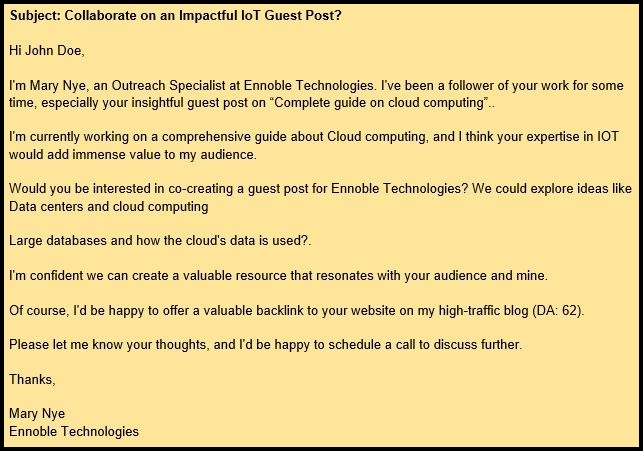
3. Personalize and Send:
- Use Mailshake’s personalization features to insert the influencer’s name, specific post title, and other relevant details.
- Send the email at an appropriate time, considering their location and time zone.
4. Follow Up:
- If you don’t receive a response within a week, send a courteous follow-up email using Mailshake.
- Be respectful of their time and avoid being pushy.
5. Negotiate & Secure Guest Post:
- If they express interest, discuss the topic, content outline, and desired backlink placement.
- Collaborate on creating a high-quality guest post that benefits both your audiences.
Remember:
- Focus on offering value and building a genuine connection.
- Respect the influencer’s time and expertise.
- Be patient and persistent, but not pushy.
- By following these steps and utilizing the recommended tools, you can increase your chances of securing a valuable backlink on an influential IoT blogger’s website.
Conclusion
In essence, the role of SEO outreach in both B2B and B2C digital marketing is rooted in enhancing online visibility, driving relevant traffic, and fostering meaningful connections with target audiences. By tailoring search engine optimization outreach strategies to the unique dynamics of B2B and B2C markets, organizations can position themselves for sustained success, drive engagement, and achieve business objectives within their respective domains. Whether engaging with businesses or individual consumers, the strategic deployment of search engine optimization outreach remains fundamental to achieving digital marketing success across diverse sectors.
Also Read: Mobile Optimization: Crucial for On-Page SEO Success – Ennoble Technologies
Also Read: On-Page SEO vs. Off-Page SEO: Which Matters More? – Ennoble Technologies
Also Read: Mastering On-Page SEO: Practical Tips & Tricks – Ennoble Technologies
Also Read: 10 On-Page SEO Mistakes You Must Avoid – Ennoble Technologies

